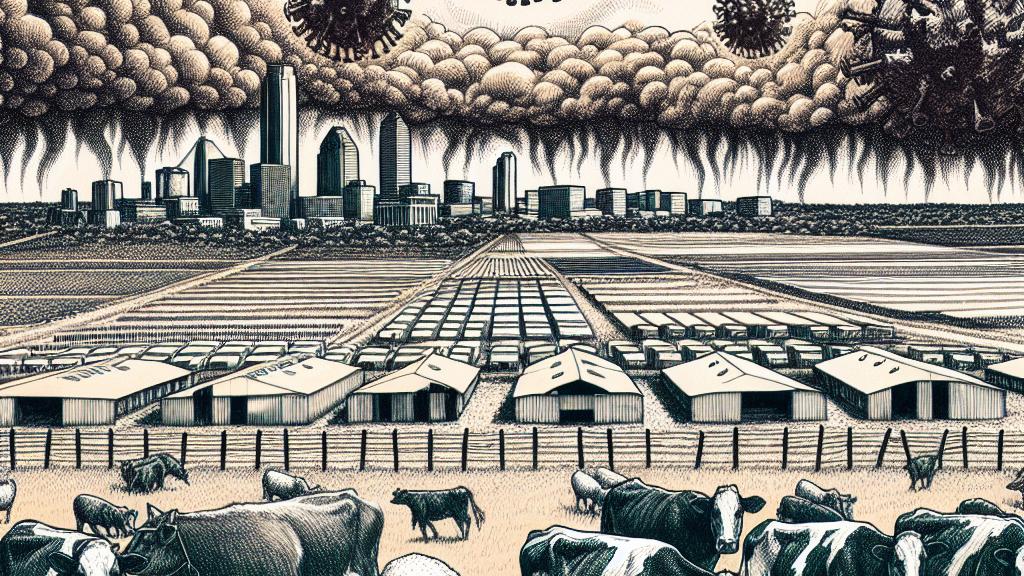Dynamics of H5N1 Clade 2.3.4.4b in Cattle
Overview
- The recent H5N1 clade 2.3.4.4b outbreak started in Texas, USA, signaling a new wave of animal health concerns.
- This highly pathogenic virus has rapidly infected over 190 farms across 13 states, creating widespread alarm.
- Dairy operations are struggling as acute mastitis impacts cows, drastically reducing milk production and economic viability.

The Emergence of H5N1 Clade 2.3.4.4b
In March 2024, an alarming report surfaced from Texas: the highly pathogenic avian influenza virus H5N1 clade 2.3.4.4b had made its way into dairy cattle. What began as isolated cases soon snowballed into a widespread outbreak, affecting more than 190 farms across 13 states and raising significant concerns regarding biosecurity practices. It’s compelling to observe how a virus, initially thought to be confined to poultry, has now crossed into livestock, illustrating the intricate connections within our agricultural ecosystems. This outbreak highlights the urgent need for enhanced disease monitoring and prevention strategies in animal husbandry.
Impacting Dairy Cattle and Milk Production
Comparative studies revealed that while calves infected with the H5N1 B3.13 strain had moderate nasal replication, they notably lacked severe clinical signs and did not transmit the virus to others. Conversely, the situation for lactating cows appeared dire. These animals exhibited acute mastitis, leading to severe discomfort and a catastrophic decline in milk yield. Picture dairy farms that once boasted robust production now grappling with milk shortages, which directly affects not only farmer livelihoods but also the supply chain for consumers. Alarmingly, research suggests that the primary transmission route may occur through milking procedures rather than direct respiratory spread, a nuance that necessitates a re-evaluation of current dairy management practices.
The Path Forward: Monitoring, Prevention, and Collaboration
The broader implications of the H5N1 clade 2.3.4.4b outbreak cannot be overstated. It poses serious risks to public health as well as future economic stability in agriculture. As viral mutations become more frequent, the potential for cross-species transmission looms larger. Therefore, comprehensive surveillance and meticulous management protocols are not just recommended; they are essential. Implementing robust biosecurity measures, such as enhanced health screenings, vaccination protocols, and stringent sanitation practices, is imperative for farmers. Additionally, fostering collaboration across veterinary science, agriculture, and public health communities is critical in developing effective strategies to combat this looming threat. To safeguard both animal welfare and food security, a proactive and coordinated approach is indispensable in our ever-evolving landscape of agricultural challenges.

Loading...